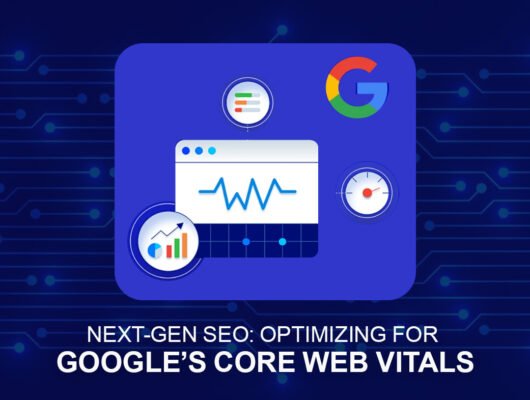Introduction to Online Advertising
Online advertising has revolutionized the way businesses communicate with their target audiences, marking a significant shift from traditional advertising methods. Historically, advertising relied on print media, television, and radio to deliver messages to consumers, often with limited ability to gauge effectiveness or engagement. The emergence of the internet has transformed this landscape, enabling companies to adopt more dynamic and measurable advertising strategies.
The early days of online advertising saw the advent of banner ads, which were simple yet effective in driving traffic to websites. As technology evolved, so did the sophistication of online advertising methods. The introduction of search engine marketing, social media ads, and display advertising has provided businesses with a plethora of options to connect with potential customers. These platforms allow for precise targeting based on user behavior, demographics, and interests, thereby enhancing the relevance of advertisements shown to users.
In the modern digital economy, online advertising is not merely a supplemental marketing strategy; it has become a cornerstone of business operations. Organizations that leverage online advertising can tap into extensive global markets, reaching consumers who were previously unreachable through traditional medial channels. This scalability is one of the primary reasons businesses commit substantial portions of their marketing budgets to digital advertising. Furthermore, the ability to track and analyze data in real-time enables companies to fine-tune their advertising efforts, improving their return on investment.
As we continue to observe advancements in technology and shifts in consumer behavior, the significance of online advertising is only expected to grow. Innovative approaches such as programmatic advertising and artificial intelligence-driven targeting are paving the way for enhanced customer engagement and more personalized advertising experiences. The future of online advertising holds promising potential, making it an essential focus for businesses aiming to thrive in an increasingly digital marketplace.
Current Trends in Online Advertising
The online advertising landscape is rapidly evolving, with several key trends shaping how brands connect with consumers. One prominent trend is programmatic advertising, which utilizes automated technology to purchase ad space in real-time. This approach allows for more efficient ad targeting and optimization, resulting in improved audience engagement and a greater return on investment (ROI). Programmatic advertising’s data-driven nature ensures that ads reach the right audience at the right time, enhancing overall campaign effectiveness.
Another significant trend is the rise of influencer partnerships. Brands are increasingly collaborating with social media influencers to promote products and services authentically. These partnerships often yield higher engagement rates than traditional advertisements, as consumers tend to trust recommendations from influencers they follow. By leveraging the influencer’s established audience, brands can effectively enhance their visibility and foster deeper connections with potential customers.
Native advertising is also gaining traction as it seamlessly blends ads with platform content, making them less intrusive and more engaging. This format allows for a more organic user experience, as consumers are often unaware they are viewing an advertisement. Successful implementation of native ads can significantly increase click-through rates and brand recognition, as demonstrated by various case studies that showcase successful campaigns across different media platforms.
Moreover, the use of augmented reality (AR) in advertising is becoming an innovative method for enhancing user experience. Brands are employing AR to create interactive advertisements that allow consumers to visualize products in their own environments before making a purchase. This immersive approach not only boosts engagement but also influences buying decisions, as potential customers can interact with products in a unique way.
Lastly, as these trends illustrate, the incorporation of advanced technologies and innovative strategies significantly impacts audience engagement and consumer behavior, driving the future of online advertising.
The Role of Data Analytics and AI
In today’s digital landscape, the integration of data analytics and artificial intelligence (AI) has become indispensable for shaping effective online advertising strategies. As advertisers seek to engage more targeted audiences, data-driven insights empower marketers to identify specific demographics and track user behavior patterns, thereby enhancing the precision of their advertising efforts. Through the analysis of vast amounts of data, marketers can uncover valuable trends and preferences that inform their ad campaigns, making them more relevant and timely.
AI technologies, such as machine learning algorithms, play a pivotal role in analyzing consumer behavior and optimizing ad placements. For instance, tools like Google Ads utilize AI to automatically adjust bids based on user engagement metrics, ensuring that ad spending is allocated effectively. This optimization enhances advertising efficiency by allowing campaigns to adapt in real-time to changing market conditions and consumer interests. This adaptability can lead to improved return on investment (ROI) for advertisers.
Customer segmentation, empowered by AI, has also transformed the way brands interact with their clients. Algorithms can process data to categorize consumers into tailor-made segments, allowing for highly personalized content delivery. This level of personalization not only increases the likelihood of consumer interaction but also fosters a deeper connection between brands and their audiences. Moreover, AI chatbots provide real-time customer service, assisting users with inquiries and enhancing their overall experience. These tools exemplify how technology, through data analytics and machine learning, can streamline communication and enhance user engagement.
As the landscape of online advertising continues to evolve, the reliance on data analytics and AI will only grow stronger. By harnessing the power of technology, advertisers can deploy strategies that are not only more effective but also resonate with consumers on a personal level, paving the way for the future of advertising.
Privacy Concerns and Regulations
The landscape of online advertising is significantly shifting, propelled by increasing consumer concerns over privacy and stringent regulatory frameworks. With the emergence of regulations like the General Data Protection Regulation (GDPR) and the California Consumer Privacy Act (CCPA), businesses must navigate a more complex landscape that prioritizes user consent and data protection. These laws are designed to give consumers more control over their personal information, mandating that companies clearly disclose how they collect, use, and share data.
The GDPR, implemented in May 2018, requires organizations operating in the European Union to adhere to strict guidelines about data handling. Similarly, the CCPA, effective from January 2020, provides California residents with rights related to their personal data, including the right to know, delete, and opt-out of the sale of their information. These regulations signify a monumental shift towards greater transparency, requiring advertisers to rethink their data collection methods and strategies.
As brands shift towards compliance with these regulations, there is a growing emphasis on ethical marketing practices. Advertisements must not only comply with legal standards but also resonate with an increasingly informed consumer base that values transparency and ethical considerations. This shift encourages brands to adopt a more consumer-centric approach, focusing on delivering relevant and meaningful content while respecting their audience’s privacy. The challenge lies in finding a balance between effective targeting strategies and respecting user consent—a delicate act that will define the future of online advertising.
Ultimately, the evolution of privacy concerns and regulations will shape how advertising agencies and brands operate in the digital advertising arena. Companies that embrace these changes positively will likely cultivate trust and loyalty among consumers, establishing a competitive advantage in a market that is gradually prioritizing privacy over intrusive advertising practices.
The Emergence of New Platforms
As the digital landscape continues to evolve, the emergence of new platforms is reshaping the online advertising ecosystem. Platforms such as TikTok and Clubhouse have captured the attention of younger demographics, fundamentally altering how brands communicate with target audiences. TikTok, known for its short-form videos, offers unique opportunities for advertisers to engage with users through creative and entertaining content. This platform’s algorithm favors engaging posts, allowing brands to reach a wider audience with captivating visuals and innovative storytelling.
Similarly, Clubhouse, the audio-based social media app, has introduced a novel approach to real-time conversations. It enables brands to participate in discussions relevant to their industry, fostering community connections and positioning themselves as thought leaders. As more users flock to these platforms, businesses must adapt their advertising strategies to capitalize on the distinct attributes and user expectations tied to each medium.
In order to leverage these new platforms effectively, brands must create tailored content that resonates with their audience. For TikTok, this could mean embracing trends, utilizing popular music, and collaborating with influencers whose followers align with the brand’s target demographic. Creating shareable content encourages organic reach and user engagement, both paramount to an effective advertising strategy. On Clubhouse, brands can host discussions or participate in relevant talks to authentically connect with users. This approach builds brand awareness while fostering trust and credibility among potential customers.
As these new platforms continue to gain traction, businesses must remain agile and willing to experiment with innovative advertising techniques. Recognizing the potential of these platforms will enable brands to stay relevant and effectively engage with the next generation of consumers. Understanding and integrating these emerging channels into their marketing strategies is crucial for those aiming to thrive in the future of online advertising.
Sustainability and Social Responsibility in Advertising
The contemporary landscape of online advertising is increasingly shaped by the demand for sustainability and corporate social responsibility (CSR). As consumers become more environmentally conscious, there is a significant expectation for brands to align their advertising practices with ethical values and initiatives that promote environmental sustainability. This shift not only reflects changes in consumer behavior but also highlights the growing necessity for businesses to adopt socially responsible marketing strategies.
Companies are now integrating sustainability into their advertising campaigns to resonate with a demographic that prioritizes ecological concerns. This alignment fosters loyalty and enhances brand reputation. For instance, brands like Patagonia have successfully utilized online platforms to communicate their commitment to environmental advocacy, employing storytelling techniques that emphasize their sustainability efforts. By sharing narratives about material sourcing, ethical labor practices, and community engagement, they are able to connect deeper with their audience.
Furthermore, the integration of social narratives into advertising helps brands address issues such as climate change, waste reduction, and ethical consumption. For example, Unilever’s “Sustainable Living” campaign not only presents their product offerings but also highlights their dedication to reducing plastic waste and improving health and well-being in communities globally. The use of digital platforms strengthens the distribution of these messages, allowing for greater engagement and advocacy from consumers who support these causes.
Another significant aspect of CSR in online advertising is transparency. Consumers today demand authenticity, and brands that openly discuss their sustainability practices tend to build trust. By showcasing measurable outcomes and ongoing commitments, companies can demonstrate their dedication. As this trend continues to evolve, it is vital for businesses to integrate sustainable practices into their core advertising strategies, ensuring that they remain relevant and responsible in the eyes of their consumers.
Future Technologies Shaping Advertising
The landscape of online advertising is undergoing a significant transformation, driven by emerging technologies such as the Internet of Things (IoT), virtual reality (VR), and blockchain. These technologies have the potential to change how brands engage with consumers, leading to more immersive experiences and greater trust in advertising practices.
The Internet of Things plays a pivotal role in the future of advertising by connecting everyday devices and allowing for more personalized marketing strategies. With IoT-enabled devices, advertisers can gather real-time data to understand consumer behavior more thoroughly. This capability can lead to targeted advertisements based on a user’s previous interactions with smart devices. For example, a smart refrigerator that tracks inventory could prompt specific grocery ads when supplies run low, thus enhancing ad relevance.
Similarly, virtual reality is set to create unique advertising environments that engage users in an interactive manner. VR technology allows brands to construct immersive experiences where consumers can visualize products and explore services in a virtual space. This can significantly bolster consumer understanding and interest. For instance, an automotive brand might offer a virtual test drive experience that showcases the vehicle’s features and performance, elevating the traditional advertisement paradigm.
Blockchain technology contributes to advertising by enhancing transparency and trust. Advertisers can utilize blockchain to track ad impressions and ensure that consumers receive the value they were promised. This technology minimizes fraud and ensures accurate data reporting, thereby building stronger relationships between brands and audiences. By leveraging blockchain, companies can also provide proofs of authenticity for products, fostering consumer confidence in their advertising claims.
While the integration of these technologies presents promising opportunities, challenges remain. Advertisers must navigate the complexities of technological requirements and consumer acceptance while maintaining privacy standards. Nevertheless, as these technologies advance, they hold the potential to redefine the future of online advertising.
Challenges Facing Online Advertising
Online advertising has transformed significantly over the past decade, yet it continues to face a multitude of challenges that hinder its effectiveness. One prominent issue is ad fatigue, wherein consumers become overwhelmed by repetitive advertisements, leading to a decline in engagement and effectiveness. Ad fatigue can result in diminishing returns on advertising spend, as audiences increasingly ignore or dismiss advertisements that fail to capture their attention. To combat this issue, advertisers must adopt fresh and innovative approaches to ensure their content remains relevant and engaging.
Another notable challenge is the prevalence of ad-blocking software. As more users resort to these tools to enhance their online experience by eliminating intrusive ads, advertisers find it increasingly difficult to reach their target audience. This trend raises critical questions about ad placement strategies and emphasizes the necessity of creating less obtrusive and more appealing advertising formats. In response, many advertisers are exploring alternative strategies, such as native advertising, which seamlessly integrates promotional content into a user’s browsing experience, thereby reducing the probability of users employing ad blockers.
Additionally, the rise of misinformation poses significant challenges for online advertising. With digital platforms becoming saturated with false information, companies must prioritize transparency and credibility in their messaging. This requires a commitment to providing accurate and trustworthy content that resonates with consumers. Strategies to address misinformation include investing in fact-checking processes and fostering collaboration with credible media organizations. Furthermore, maintaining high standards of creativity and relevance in advertising is crucial for retaining consumer interest in a crowded digital marketplace. Engaging content that speaks to consumers’ needs and preferences remains essential for overcoming these challenges in online advertising.
Conclusion: The Evolving Landscape of Online Advertising
The online advertising industry is in a state of constant transformation, influenced by technological advancements, changing consumer behaviors, and evolving platforms. As discussed throughout this blog post, several key trends are emerging that businesses and advertisers should pay close attention to. From the rise of artificial intelligence and machine learning, which enable hyper-targeted campaigns, to the increasing significance of social media influencers, these innovations are reshaping how brands connect with their audiences.
Moreover, the growing emphasis on data privacy and regulations is prompting companies to rethink their data collection and advertising strategies. Consumers are becoming more conscious of how their data is utilized, which emphasizes the need for transparency and ethical marketing practices. This shift presents an opportunity for brands to build trust and loyalty with their customers by prioritizing their needs and preferences.
The integration of immersive technologies, such as augmented reality (AR) and virtual reality (VR), is another trend that holds significant potential for engaging advertising experiences. These technologies allow brands to provide interactive and memorable experiences that can set them apart in a crowded market. As consumers seek more immersive content, advertisers that embrace these innovations will likely gain a competitive edge.
As we look towards the future, it is clear that change will continue to be a constant in the online advertising landscape. Brands must remain adaptable and forward-thinking in their advertising strategies, ready to incorporate new technologies and respond to the dynamic preferences of their audiences. The potential for innovation and creativity within this sector is vast, and those who seize the opportunities will be best positioned for success in the coming years.







